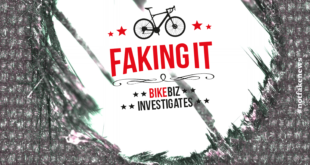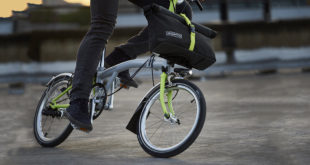The sale of counterfeit bicycles didn’t originate in China, nor is it a new phenomenon. In fact, the first epicentre for selling counterfeit cycles was Europe in the early 19th century. The creation, in 1817, of the wooden Laufmaschine, or running machine, by Baron Karl Drais in Mannheim, Germany, didn’t enrich the inventor. This was because, according to an eminent historian, the "draisine" was pirated. "Artisans built copies on their own merely based on the text of the news," Professor Hans-Erhard Lessing told BikeBiz.
"There was no global patent law covering all German duchies until the imperial one of 1877. In Dresden alone, five copiers built more or less sensible variants of Drais’s original design."
Dr. Lessing, author of books in German on Drais, and co-author of the English-language Bicycle Design of 2014 added that the knock-offs lacked key features, and were, therefore, dangerous to both users and onlookers. "All British velocipedes lacked brakes and trail for self-alignment, causing unpleasant collisions with pedestrians on sidewalks."
Dr. Lessing believes these collisions, caused by poor copies, were probably the "main reason for the clampdown on hobby-horses by the authorities in London and elsewhere."
The craze for what were also called hobby- or dandy-horses had fizzled out by the early 1820s – "pirating killed the idea," says Dr. Lessing. When in the late 1860s innovators resurrected the velocipede by added pedals the craze reignited.
But copiers got to work again, and the burgeoning bicycle market was plagued by poor-quality knock-offs, as evidenced by the author of one of the first bicycle books.
"Many defects are concealed by the coatings of paint," wrote J. T. Goddard, a complaint used today of Chinese fakes. He added that a "machine that is weak in any point, is a dangerous one in fast riding," a concept which still resonates today.
Goddard, writing in his 1869 book The velocipede: its history, varieties, and practice, also remarked on the huge profits supposedly made by cycle manufacturers, a complaint used as a justification by today’s purchasers of Chinarellos, Chinondales and Chinagos:
"There is a very general complaint of the high prices maintained by the manufacturers of velocipedes, and it is claimed they are pocketing immense receipts, at the expense of an excited and incautious public."
The "excited and incautious public" is still with us, and so is the copying, of course.
+++
FAKING IT – Inside the shady world of counterfeit bikes, clothing and parts is a series of 20 articles. For offline reading convenience the 25,000 words can be found on a PDF, a Kindle file, an eBook and a Word document.
 BikeBiz Bicycle and cycling retail news
BikeBiz Bicycle and cycling retail news



